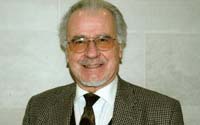SHINGLES
SHINGLES (HERPES ZOSTER).
By DR HARALD GAIER.
Shingles, an acute infection caused by the re-activation of the latent varicella zoster virus (VZV), is an eruption of a group of painful vesicles (small, thin-walled, raised skin blisters containing clear fluid).
It generally only affects one side of the body, and it follows the anatomical course of an inflamed sensory nerve. It mainly afflicts adults, as the VZV is the chickenpox virus that was ‘dormant’.
It tends to invade the posterior root ganglia associated with the thoracic or trigeminal nerves. The accompanying pain may be constant or intermittent, superficial or deep.
Early symptoms may include gastrointestinal disturbances, malaise, fever, and nearly always headache.
The inflammatory condition usually subsides in about 4 weeks, but post-herpetic neuralgia can cause persistent and severe pain for many months, or even years, thereafter.
Orthodox Medicine
Acyclovir is active against herpes zoster viruses but does not eradicate them. It will ease the condition, but not cure it. But, by contrast, non-orthodox medicine has a very large and effective arsenal.
Orthomolecular Medicine
This therapeutic approach recommends 6g ascorbic acid together with 1g L-lysine daily, and 1ml vitamin B12 intra-muscularly twice weekly. In the cases reported by A Hoffer, all pain was gone within twenty-four hours and the vesicular lesions had begun to heal. The vitamin B12 injections could probably be substituted by the taking of a daily dose of sublingual vitamin B12.
Nutritional Medicine
In multiple studies, proteolytic enzymes, comprising 160 mg Trypsin, 160 mg Chymotrypsin, and 400 mg Papainase, taken five times daily, were shown to be as effective as Acyclovir.
In a Russian study, 150 patients with acute shingles received Trypsin alone. Compared with 200 similar patients on routine (largely palliative) therapy, Trypsin proved highly effective: it reduced the symptoms during the acute stage, and none of the Trypsin-treated group had recurrences or developed post-herpetic neuralgia during the 3-year follow-up
Corrective Supplementation
Adenosine-5’-monophosphate (AMP) is a naturally occurring purine nucleotide that is an intermediate in nucleic acid synthesis. Patients with shingles have been found to have abnormally low levels of AMP as well as high levels of Adenosine triphosphate (ATP). In a double-blind study patients with an acute shingles eruption received intra-muscular injections of 100 ml AMP in a gelatine base three times a week for four weeks.
The AMP reduced the herpetic pain soon after the start of treatment, and promoted faster healing of the skin than the placebo.
After 4 weeks, 88% of the AMP-treated were pain-free, compared with 43% of the placebo group.
It should be noted that there is the theoretical concern raised by AMP’s ready conversion into adenosine, which can have an immune-suppressive effect, although the dosages appear to be too small to have any significant effect. Nonetheless, the possibility of immune-suppression has not yet been ruled out by scientific studies.
Acupuncture and Cupping
These treatment methods are contra-indicated in cases involving herpes zoster.
African Medicine
The leaf of Plantago major, whole or bruised, is applied to the skin area affected by the shingles lesions. Experiments confirm its microbicidal action, which facilitates healing. Moreover, the application has been reported to be antiphlogistic, to aid epithelization and to produce no injurious side effects.
European Folk Medicine
The gentle application, topically, to the affected skin area of house-leek (fresh juice or pulp) has traditionally been reported as soothing and speeding up the healing process.
Homoeopathy
Parapheylene diamine is derived from aniline or amino benzene. It is used in dyeing and printing processes, and before it was finally banned, it was also used in hairdressing due to its staining properties. It has very strong sensitising properties, leading to pathological chemical-sensitivity responses in those exposed to it.
The homoeopath G Dano studied these effects on healthy humans. In the clinical symptomatology the dermatological reactions are: “Severe pruritus, covered with vesicles. The pruritus is burning, painful, worse at night, ameliorated by applying very hot water. Blisters appear, which dry up, become scabby, with severe, persistent burning and itching”. The potency that ought to be tried first is 6CH.
Osteopathy
The headaches and the myofascial pain syndrome, that often induces poor sleep, accompanying shingles, may be effectively relieved by osteopathic manipulative therapy.
Phytotherapy
In a controlled clinical trial involving 51 patients, a topical preparation of Clinacanthus nutans, or a placebo, was applied five times a day to the skin area affected by the shingles eruption for seven to 14 days. The experimental group healed very much faster than the placebo group. A larger randomised controlled trial later reported the same beneficial result.
A systematic review of three randomised controlled trials has shown that post-herpetic neuralgia can be effectively relieved by the topical application of Capsaicin (the alkaloid derived from the pod of Capsicum frutescens [cayenne pepper]).
At the very first signs of skin involvement in shingles, the topical application of simple Melissa ointment can have an ameliorating effect on the later progression of the shingles outbreak. The action of the Melissa is virostatic and tolerance is excellent.
About the Author:
Dr Harald Gaier is a naturopathic physician based on Harley Street. Dr Gaier has nearly four decades of clinical experience and writes for several of today’s leading alternative medicine publications. For more information see: www.drgaier.com
For more interviews with Dr Gaier listen to PASSION for the PLANET radio or search this site for interview available on-demand.

